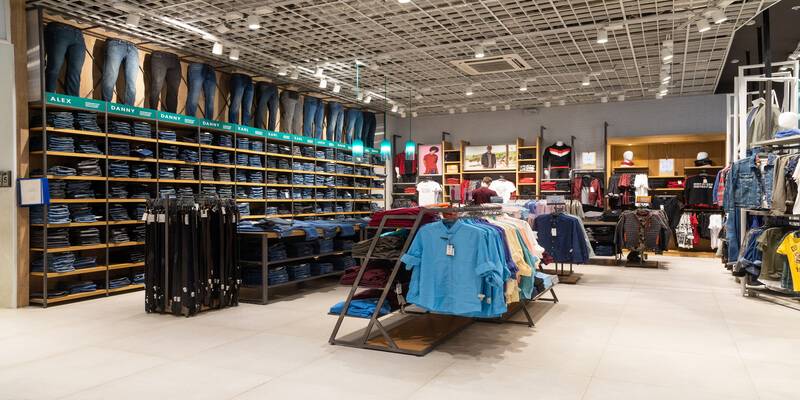The actual cost of clothing

This feature is about clothing — the clothes we wear, the people who make these clothes, and the impact they have on our world. It’s about greed and fear, power and poverty. It’s really complex as it extends all around the world. But, it’s also really simple, revealing just how connected we are to the many hearts and hands behind our clothes. Coming from a background in fashion and working with people from different fields makes you question the daily functioning of the system. It makes you discover things that change your perspective as a whole.
To a great extent, we communicate who we are through clothing and this is how it has been throughout history. Over the years, trends such as the ‘S-bend’ corset, ‘hobble skirts’, ‘miniskirt’, ‘Marie Antoniette making huge hats’, ‘bias-cut gowns’, ‘bikini’, ‘leggings’, and ‘athleisure’, among others have come and gone. What interests most people is that through clothing, we exhibit a part of what we wish to share about ourselves. On peeling the layers, one can see that there has always been a system. A fashion system where people would go to fashion shows for spring, summer, autumn, and winter collections, which ran like clockwork for many years. It kept being reinvented through the ages. Now, the shift is moving ruthlessly towards a way of producing that only looks after the interest of the big businesses.
Growing up, we never give much thought to things other than the price of the clothes that we buy. Choices are usually made on the basis of style or a good deal. Today, the cheaper the items, the more we buy. This has led to the introduction of a new model of fashion, called “Fast Fashion”. This new concept has transformed the way clothing is bought and sold. It’s all part of a High Street Revolution — Fast Fashion. Instead of the two seasons per year — Summer and Winter, we now have 52 seasons, as something new is coming in every week. The prices have dropped and the way of making these products has completely changed. While budget-conscious shoppers are happy with the new trends every week, one must ask where does this end?
Globalised production basically means that all of the manufacturing has been outsourced to low-cost economies, particularly where wages are low and kept low throughout. Those at the top of the chain get to choose where the products are being made, and they get to switch, for example, if one factory says —we can’t make it for cheap anymore, the brand will switch to another alternative. The stores have a competition going on between them, they negotiate for the cheapest outlet available. Since the low-cost economies want the business so badly and don’t have other options to survive, every day they choose to do this.
In such situations, something’s gotta give. Either the price of the product goes up or the manufacturers turn a blind eye towards the working conditions. Disregarding safety measures and cutting corners have become a usual practice with this new model. Unsafe working conditions, low wages, and factory disasters are all neglected as the workers are totally dependent on these projects and have no other alternative means to sustain themselves. This is the narrative that is used to explain the way the fashion industry now operates globally.
So, isn’t there a better way of making and selling clothing that generates economic growth, but without taking such an enormous toll? The generation of today is mesmerised by the fashion industry and wants to be a part of the same, one way or the other Fashion designing, fashion merchandising, fashion buying, fashion styling, you name it and there is a new field to join in fashion every day. Usually, most fashion brands start with a concept of a collection or a look. Nobody tends to think — who is going to make the product? How can I ensure that the producers or suppliers are going to tend for themselves? It’s estimated that one out of six people around the globe, work in some part of the global fashion industry, making it the most labour dependent industry on the planet. But to fully understand the impact that fashion is having on the world, we have to go to the beginning of it all.
Cotton produces the fibre that’s responsible for most of the clothing worn in the world today. As our appetite for fashion grows, the cotton plant itself is being re-engineered to keep up. There’s a big drive towards the industrialisation of agriculture, the intensification of agriculture. Instead of the old forms of farming, which were very much in sync with nature, now the land is almost considered as a cotton patch. As it becomes clearer, just how much of an impact fashion is having on our world, it also has a growing effect on us, the people buying the clothes.
Today, we purchase over 80 billion pieces of new clothing every year. The way we buy clothes has changed so much, so fast, that few people have actually stepped back to understand the origin of this new model of “Fast Fashion” and the consequences of such an unprecedented increase in consumption. Fashion can never be thought of as a disposable product. It is here to stay. Trends might come and go but the fashion produced stays with us for eons. As the awareness about the impact of fashion on our world is growing, there are key leaders in the industry who are beginning to question the model that has been built on careless production and endless consumption. Today’s generation needs to start questioning and challenging these methods. Try and opt for ways that do not prove to be harmful to the planet. The customer and the producer have to know that they’re in charge.
While we seek comfort in these materialistic purchases, will we ever be able to let go of what actually goes into the making of these clothes? The truth is often buried deep and would require uncovering many layers before the actual cost of clothing surfaces. Let’s be the voices of those workers who have been long suppressed.






